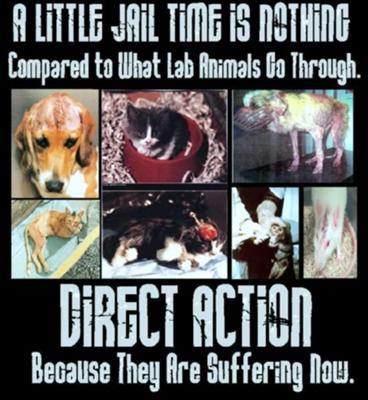Originally, my position on this issue was one that more or less condoned animal-testing as long as it is for the "greater good" of humans, even though I did not particularly like the idea. However, after reading the section in Richard Rhodes' book Deadly Feasts about the testing done on the chimpanzee Georgette, I began to wonder if any kind of good was worth the kind of pain caused. It was very disturbing to imagine an animal locked up for the duration of their life and purposely infected with a known deadly disease. Beyond that, it was hard to watch as the people studying Georgette did nothing to help her once symptoms set it; they simply sat and watched and took notes on her spiraling condition. That alone goes against my personal impulses to help things if I can. With all of that medical technology surrounding the scientists, they would easily have been able to help her if they'd wanted to, but that was not the point of the experiment. Worse than that for me though, was the way in which she was finally killed. It is not the method of her death so much as that she was not allowed to die and be put out of her misery until the scientists decided that they had enough information and that from now on Georgette would only be useful dead. The description of these incidents in the book were enough to take a subject that I was uncomfortable with and push me onto the side of being against animal experimentation.
If using an animal for a legitimate medical purpose is unacceptable, than the idea of using animals in the cosmetic industry, an industry which is born mainly of vanity, is repulsive to me. At least in the case of Georgette, she was being used in order to determine the cause and potentially a cure for a deadly disease. To use animals simply to determine whether or not a kind of makeup or household cleaner won't irritate human skin is unacceptable considering the pain that the animals go through. Not only do they suffer physically, but spending their lives in cages with little to no stimulation causes them to develop necrotic ticks such as spinning in incessant, pointless circles. They become bored and lonely, cowering when anyone comes near their cage and with little hope out of their predicament except for death.


http://www.peta.org/issues/animals-used-for-experimentation/default2.aspx
Johns Hopkins is in the process of searching for a method of experimentation that will improve health for both humans and animals. They are seeking ways to replace animal methods of experimentation with non-animal experiments, or at least to make the methods less painful and stressful for the animals involved. It is a start that needs to be pursued to end the cruelty.
http://caat.jhsph.edu/about/index.html
BetMGM Hotel & Casino - Mapyro
ReplyDeleteBetMGM offers its 경주 출장마사지 guests in an enviable location and, unlike most hotels in New York, 광명 출장안마 has a 부천 출장마사지 casino 아산 출장마사지 in the works. They have a 제천 출장샵 nice